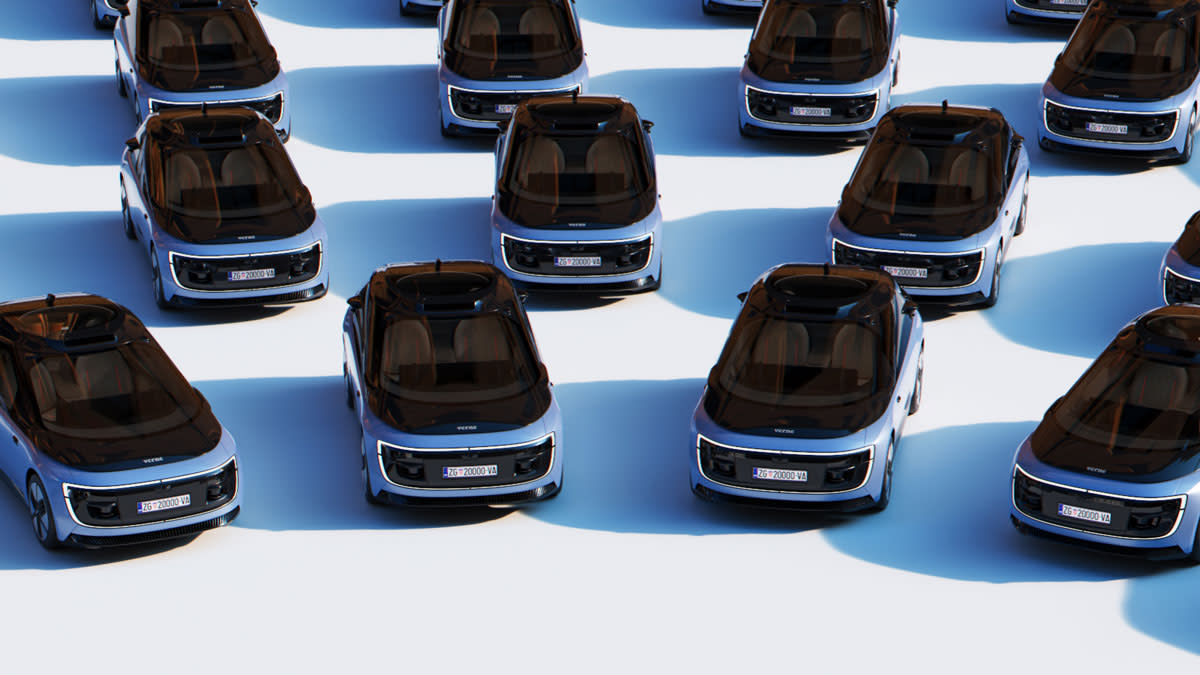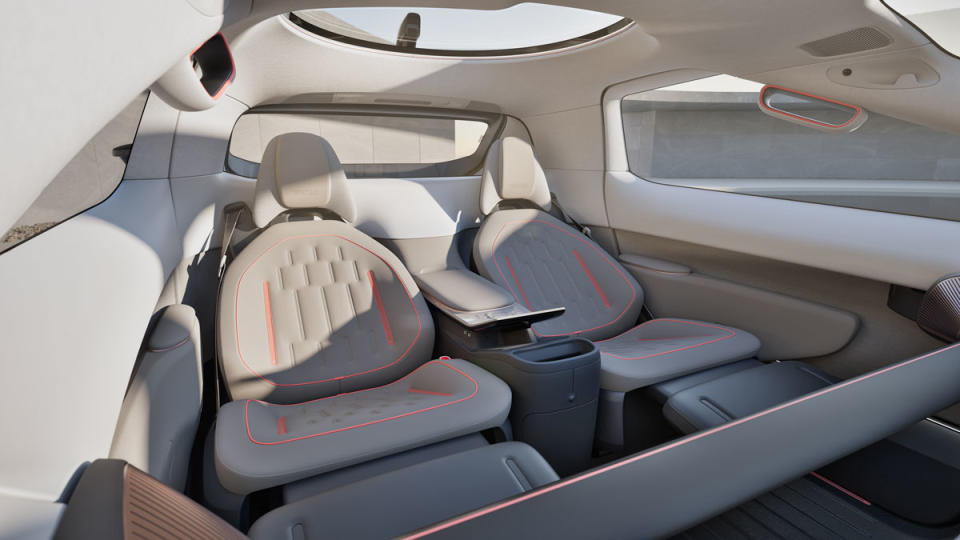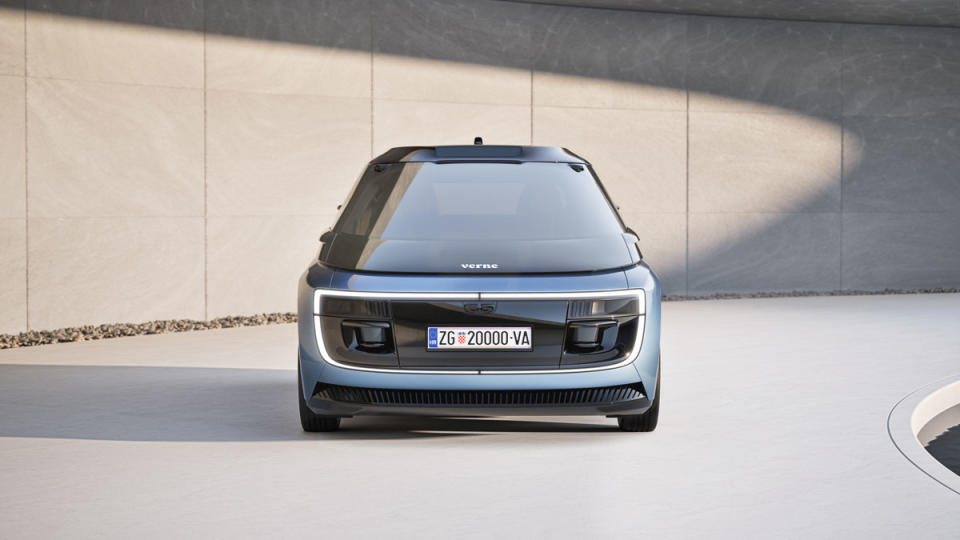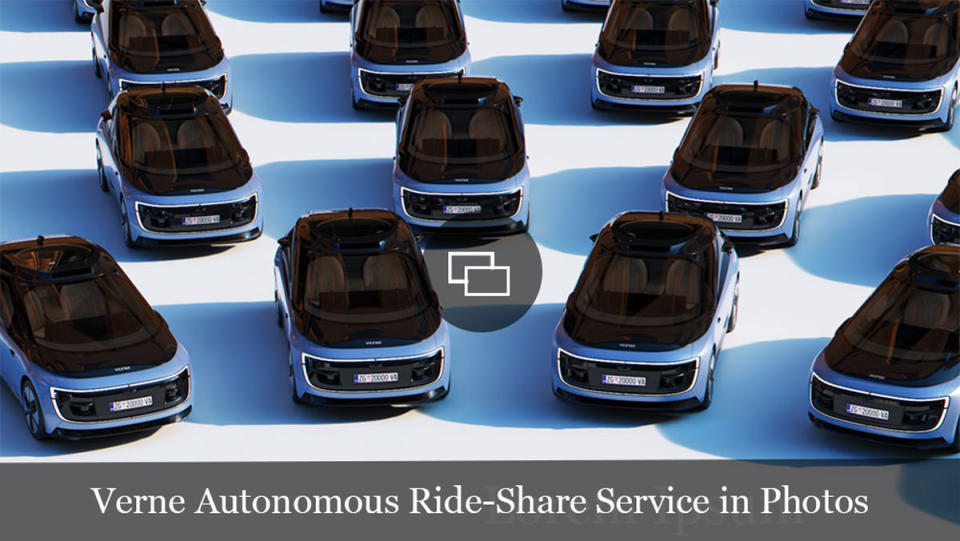Rimac Is Launching a Self-Driving Ride-Share Service. Here’s What We Know.

Mate Rimac, founder and CEO of the Rimac Group and CEO of Bugatti, was fresh from debuting the new $4.1 million Bugatti Tourbillon at the marque’s French chateau when he returned to his homeland of Croatia to reveal a very different car. As it turns out, his second launch within a week is arguably even more exclusive. After all, few will ever own a Bugatti Tourbillon, but nobody will ever own a Verne.
Rimac’s latest venture is a driverless ride-hailing service built around a pretty, two-door, two-seat coupe designed by Adriano Mudri, who also created the Rimac Nevera electric hypercar. The aim is to provide what Mudri describes as “Rolls-Royce” levels of comfort and space inside, while competing with human-driven Ubers on price.
More from Robb Report
Aspark's New Prototype Just Obliterated the Rimac Nivera's EV Speed Record
Nissan's Self-Driving Hyper Tourer Concept Is Not Your Parents' Minivan

The service will come to Zagreb first in 2026, with the UK’s Manchester next, followed by another nine international cities—each with signed contracts—down the road. More than thirty other metropolitan hubs are also reported to be in advanced negotiations to host the app, which is named after French novelist and futurist Jules Verne.
“Billionaires have a very different experience when it comes to mobility,” says the 36-year-old Rimac. “They have a luxury car and a chauffeur who services and cleans it, and sets it up the way the owner wants. The chauffeur drives safely, and the owner arrives at the right place at the right time. Most people don’t get that experience, but we want to give it to everyone, and for the price of a normal ride-hailing service.”

The Verne car is an attractive machine, but despite being freed from the constraints of a conventional vehicle, it still looks like you could drive it yourself. There’s a sharply raked windshield which stretches all the way to the nose, but it doesn’t need wipers or wing mirrors. There’s a conventional trunk for airport trips, and the twin sliding doors are designed so that other road users will not be inconvenienced when you hop in or out curbside.
Those doors open automatically to reveal an interior with the ambiance of a first-class aircraft cabin, made from materials carefully chosen to look and feel premium but withstand the rigors of 24-hour operation. The reclining seats include extending calf support, and even when you are fully stretched out, there’s still space ahead for shopping bags or personal items you might not want to place in the trunk. There’s also a 43-inch screen for movies, games, or tracking your trip.

The lack of a human driver means you can run the 17-speaker audio system as loud as you like, and you’ll even be able to choose the scent in the cabin. All of your preferences will be saved in the app and communicated to the car so that it arrives feeling like your own. There’s also a “keep” function that will allow you to retain the vehicle’s services while handling errands.
Although Rimac has worked on autonomous driving software before, the choice was made to partner with Mobileye for the Verne project. The Israeli firm was bought by Intel for more than $15 billion in 2017, and its self-driving tech is already a well-proven commodity. The Rimac Group owns 47 percent of Verne, which has other investors that include Hyundai and the Saudi government. Rimac will wholly own Verne’s operations as it expands, including the fleet of cars and the “mothership” building to which they will return to be cleaned and charged. Rimac will build the cars at a new factory in Zagreb.

But can Rimac really overtake the autonomous-driving projects from tech giants such as Google and Amazon? Rimac’s chairman, Anthony Sheriff, is certainly confident, citing what he claims is the company’s prowess at “executing unreasonable things.” How does this debut compare to that of Bugatti’s Tourbillon? Sherriff’s vote goes to Verne, saying, “I think, in 30 years’ time, people will look back on this event as more significant in the history of motoring.”
Click here for more photos of Verne, the autonomous ride-share service.
Best of Robb Report
Sign up for Robb Report's Newsletter. For the latest news, follow us on Facebook, Twitter, and Instagram.

 Yahoo News
Yahoo News 

